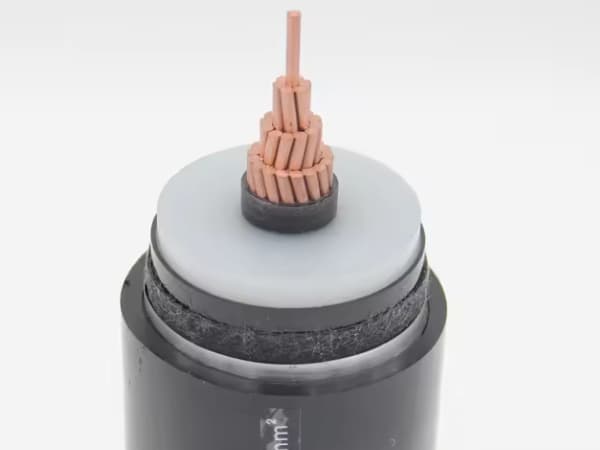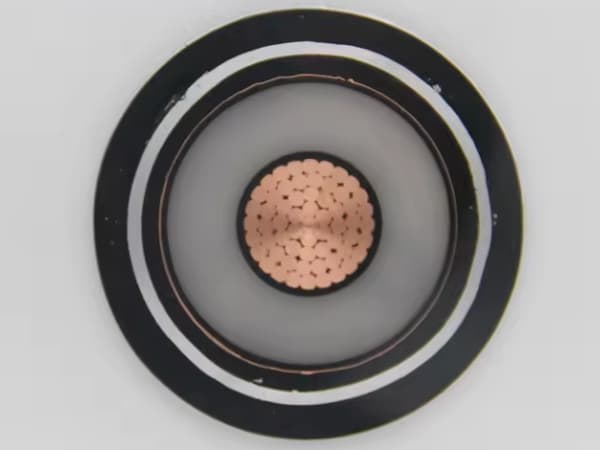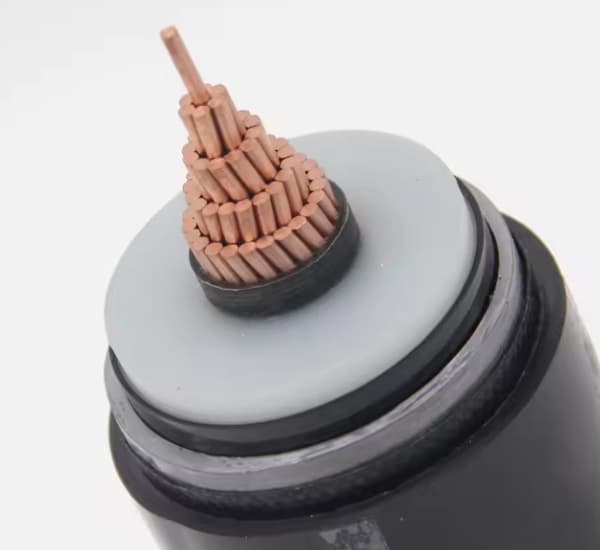
As global energy demand increases, The infrastructures necessary to transmit and distribute electricity safely and efficiently are increasingly crucial. One of the critical components in high voltage power transmission is the 69kV cable. These cables are essential for transmitting large amounts of electricity over long distances., either by air or underground. This article provides a detailed look at 69kV cables, your applications, sizes, specifications and prices, with special attention to underground facilities.
What is a 69kV cable?
And 69kV cables is an electrical cable designed to carry high voltage electricity, specifically at a voltage level of 69 kilovolts (kV). These cables are commonly used in power transmission systems., where they transfer electricity from generation plants to substations or directly to large industrial consumers. High voltage allows efficient transmission of electricity over long distances with minimal energy loss.
69kV Cable Applications
Power transmission: The main use of 69kV cables is power transmission, where they transport electricity from generating stations to substations or industrial facilities.
Substation connections: These cables are also used to connect substations within the electrical grid., ensuring stable and reliable power distribution.
Industrial electrical supply: Large industrial facilities that require large amounts of power may use power cables. 69 kV to connect directly to the grid.
Renewable energies: The cables of 69 kV are often used in renewable energy projects, such as wind or solar farms, where they help transmit electricity generated in remote areas to the main electrical grid.
What is a 69kV transmission line?
A 69kV transmission line is a type of power line that transmits electricity at a voltage of 69 kilovolts. These lines can be overhead or underground., depending on specific installation requirements.
Overhead vs. Underground 69kV Transmission Lines
Overhead transmission lines: These lines are usually suspended from towers or poles and are a cost-effective way to transmit electricity over long distances.. However, are exposed to environmental factors such as climate, fauna and human activity, that can cause interruptions.
Underground transmission lines: The underground cables 69 kV are buried underground, which offers protection against environmental factors and reduces the risk of interruptions. Although they are more expensive to install, Underground cables are usually preferable in urban areas, environmentally sensitive locations or where aesthetic considerations are a priority.
Advantages of 69kV underground cables
Less cuts: Underground cables are less likely to be damaged by storms, fallen trees or wildlife, leading to fewer power outages.
Improved aesthetics: Underground installations eliminate the visual impact of overhead lines, making them ideal for urban areas and scenic regions.
Lower maintenance costs: Although the initial installation is more expensive, Underground cables require less maintenance throughout their lifespan.

Underground high voltage cables
Underground high voltage cables, like 69kV cables, They are essential for modern energy transmission, especially in densely populated or environmentally sensitive areas. These cables are usually installed in conduits or directly buried in trenches.. Advanced materials and construction techniques ensure they can withstand high stresses and harsh installation environments.
Construction of underground high voltage cables
Conductor: The central part of the cable, usually copper or aluminum, carries electric current. Copper is preferred for its superior conductivity, while aluminum offers a lighter and more economical option.
Isolation: Around the conductor there is a layer of insulation, usually made of cross-linked polyethylene (XLPE) or ethylene propylene rubber (EPR). This insulation prevents electrical leakage and protects the cable from environmental factors.
Armor: A metal screen, often made of copper or aluminum, surrounds isolation. This shielding helps contain the electric field within the cable and protects against external electromagnetic interference..
External cover: The outer shell is the last protective layer, normally made of PVC or polyethylene. Protects the cable from mechanical damage, humidity and exposure to chemicals.
Installation of 69kV underground cables
The underground cables 69 kV are installed using various methods, depending on the terrain, environmental conditions and project requirements. The most common installation techniques are
direct burial: The cable is buried directly in the ground, often in a trench filled with sand or gravel for added protection.
Duct installation: The cable is installed within a conduit or conduit system, providing additional protection and easy maintenance and upgrades.
Tunnel installation: In some cases, cables are installed in tunnels, especially in urban areas where space is limited and it is necessary to run several cables together.
69kV Cable Sizes and Specifications
69kV cables are available in various sizes and specifications, depending on current carrying capacity, the installation environment and application requirements. Below are some common factors to consider when selecting a power cable. 69 kV:

Driver size
Driver size is a critical factor, since it determines the current carrying capacity of the cable. Larger conductors can carry more current, but they are also more expensive and difficult to install. The most common conductor sizes for cables 69 kV son:
500 kcmil (kilo-circular mil): A standard size for high voltage cables, offering a good balance between current capacity and ease of installation.
750 kcmil: Used for installations where higher current loads are required.
1000 kcmil: The largest standard size, suitable for the most demanding applications.
Insulation thickness
The thickness of the insulation layer depends on the voltage level and environmental conditions. For cables 69 kV, Typical insulation thicknesses range from:
10,5 mm for standard installations
11,5 mm for areas with higher electrical stress or exposed to difficult environments.
Shielding and covering
Metal shield: Normally manufactured in copper or aluminum, Shielding thickness varies depending on cable application and installation environment.
External cover: The material and thickness of the outer shell are chosen based on environmental factors such as humidity, chemical exposure and mechanical stress.
Specifications of high voltage cables 69kV cable
High voltage cables, including those of 69 kV, must meet strict specifications to ensure safe and reliable operation. Key specifications to look out for include:
Electrical specifications
Nominal voltage: 69kV is the nominal voltage, but the cable must withstand higher tensions during surges or faults.
Rated current: Current carrying capacity depends on conductor size and installation conditions.
Short circuit capacity: The cable must withstand high currents during short circuits without damage.
Mechanical specifications
Tensile strength: The cable must withstand mechanical forces during installation and operation.
Warp radio: Minimum bend radius ensures that the cable is not damaged during installation.
Impact resistance: The outer cover must resist impacts and abrasions during installation and operation.
Thermal specifications
Operating temperature: The cable must operate safely within a specified temperature range, usually between -40 °C y +90 °C.
short circuit temperature: The cable must withstand higher temperatures during short circuits without damage.
Environmental specifications
Water resistance: The outer cover must resist the ingress of water, especially in underground installations.
Chemical resistance: The cable must resist degradation caused by exposure to chemicals present in the soil or atmosphere.
UV resistance: For outdoor installations, the cover must resist UV radiation without degrading.
High voltage cable price list 69kV cable
The price of high voltage cables, like cables 69 kV, varies depending on several factors, as the conductive material, the size, the type of insulation and additional features such as shielding and shielding. Here's an overview of the factors that affect cost:
Driver material
Copper: Copper is more expensive due to its higher conductivity and durability. However, Typically preferred for critical installations where performance is paramount.
Aluminum: Aluminum is less expensive and lighter, making it easier to handle and install. It is a popular choice for large scale projects where cost is an important factor..
Conductor size 69kV cable
Larger conductors are more expensive due to higher material costs and the additional insulation and shielding required..
Insulation type
XLPE insulation: It is the most common type of insulation for power cables. 69 kV. It is durable and offers excellent electrical properties, but it has a higher cost.
EPR insulation: EPR offers better flexibility and water resistance, making it more expensive than XLPE but ideal for specific applications.
Additional Features
Shielding and shielding: Cables with shielding or additional armor for greater protection are more expensive.
External cover: The type of outer cover, whether PVC, polyethylene or other material, It also influences the price.
General prices
Although specific prices may vary significantly based on the above factors, Below is a rough estimate of the cost of power cables. 69 kV:
copper wire 69 kV (500 kcmil): 20 – 30 $ per meter
aluminum cable 69 kV (500 kcmil): 10 – 15 $ per meter
copper wire 69 kV (750 kcmil): 30 – 40 $ per meter
aluminum cable 69 kV (750 kcmil): 15 – 20 $ per meter
These prices are general estimates and may vary depending on market conditions., the manufacturer and the specific project requirements.
